The tradition of using tiles has flourished in Portugal throughout the centuries and today it remains a defining characteristic of the country's architectural identity. The blue “azulejos”, with their intricate designs and historical significance, are still a prominent feature on buildings, churches, palaces and public spaces throughout Portugal, creating a unique and beautiful aspect of the nation's cultural heritage.
Exploring the historical narrative of Portuguese tiles
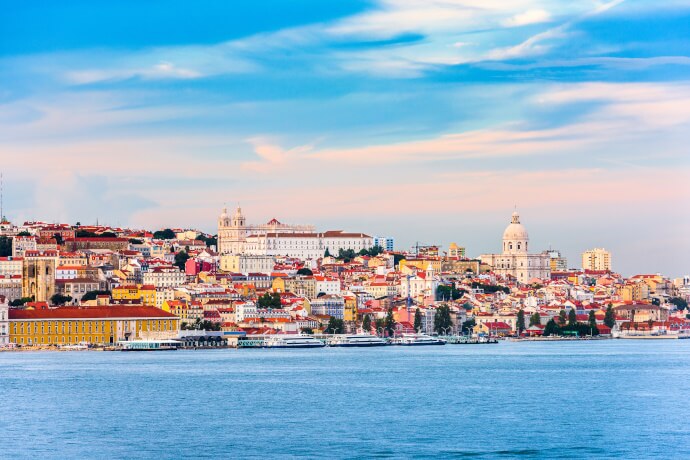
Portugal has a rich history when it comes to tiles, known as "azulejos" in Portuguese, and its use as a decorative piece in this Iberian country dates back to the 15th century.
The Moors, people of North African and Berber descent, introduced decorative tilework to the Iberian Peninsula, including present-day Portugal, during their rule. They were skilled in the art of ceramics, using intricate geometric designs and arabesque patterns. The word "azulejo" itself comes from the Arabic word "al-zulayj," which means "small polished stone." The term was therefore used to refer to little, glazed ceramic tiles during the period the Moorish ruled in the Iberian Peninsula (711-1492 AD).
The 16th century marked the Golden Age of azulejos in Portugal. King Manuel I, known as Manuel the Fortunate, had a great appreciation for the arts and promoted the use of tiles in both religious and secular buildings. The popularity of this object subsequently increased, causing many important historical constructions in Portugal to feature such impressive tilework.
Over time, different styles emerged in Portuguese azulejos. The most common themes included religious scenes, historical events, landscapes and everyday life depictions, with blue and white being the most prevalent colours. The 17th and 18th centuries saw a further expansion of tile production in Portugal, with workshops established in Lisbon, Porto and other major cities. The devastating earthquake that struck Lisbon in 1755 caused widespread destruction, but its reconstruction led to the proliferation of azulejos on buildings, adding to the city's unique charm. The Baroque and Rococo styles were also incorporated into tile designs during this period.
The use of tiles in Portugal experienced a revival in the 19th and 20th centuries. Art Nouveau and Art Deco styles influenced new designs, adding a touch of modernity to existing traditional techniques.
Why are Portuguese azulejos mainly blue and white?
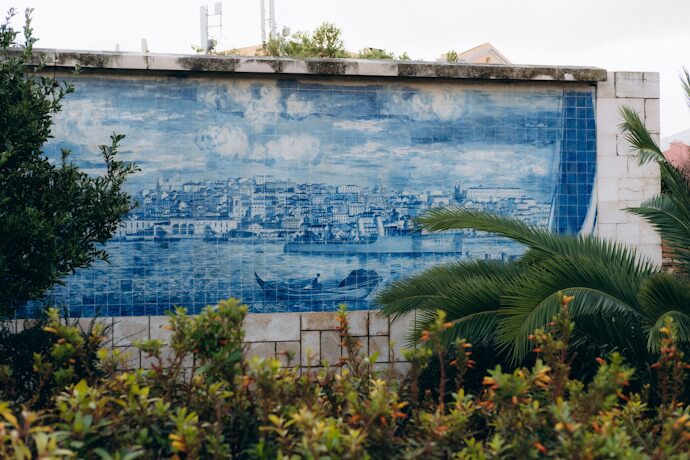
You may be wondering why most Portuguese tiles are blue and white. Their predominance is closely linked to the historical influence of Chinese porcelain and the trade connections established between Portugal and Asia in the 16th and 17th centuries. During this time, the maritime expeditions facilitated the exchange of goods, including ceramics and porcelain from the East.
Chinese porcelain, renowned for its quality and intricate blue and white patterns, became highly sought after in Europe. This type of pottery was made using cobalt blue pigments, which were painted onto white clay before being fired in kilns. The cobalt blue colour had a striking and visually appealing effect, and it quickly gained popularity among European nobility and royalty.
As Chinese porcelain started to be imported to Portugal, national artisans started to adopt the cobalt blue pigment to produce more affordable tiles with similar blue and white designs. These, known as azulejos, became an integral part of Portuguese culture and architecture. Over time, the art of azulejos evolved, incorporating not only blue and white but also other colours and various decorative themes.
Where to find Portugal's finest tile examples
Museu do Azulejo
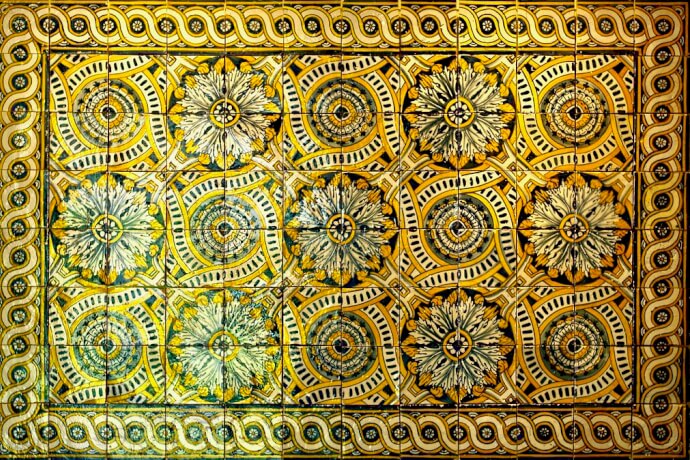
The Museu do Azulejo (Tile Museum) in Lisbon is a fascinating institution dedicated to the art of tilework and its historical significance in Portugal. It is housed in the beautiful Convent of Madre de Deus, a former convent dating back to the 16th century.
It showcases an extensive collection of historical azulejos dating from the 1400s to the 1900s, compiling various styles, designs, and techniques that were used throughout the centuries, offering insights into the evolution of tile art in Portugal.
The museum's cloister and church interiors are adorned with stunning azulejos and these intricately decorated tiles depict religious scenes, historic events and vivid blue and white designs that reflect the Baroque and Rococo styles prevalent during the period. The highlight of the museum is a set of panoramic tiles that provide a detailed depiction of Lisbon as it appeared before the devastating earthquake of 1755.
The Museu do Azulejo also showcases modern and contemporary tile works, featuring the creativity and innovation of contemporary artists and designers.
Igreja do Carmo
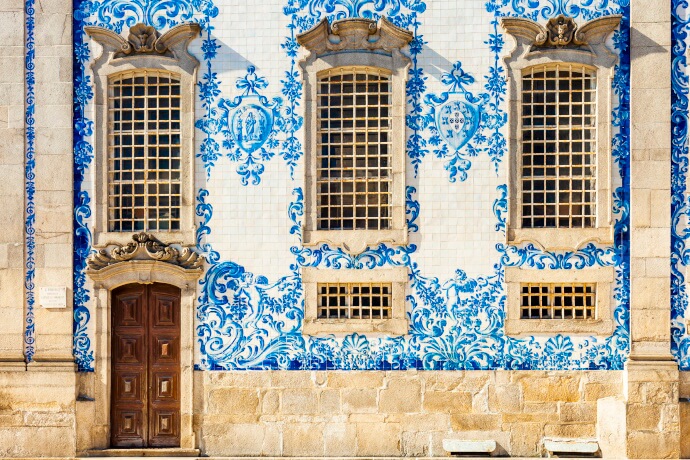
The interior of Igreja do Carmo in Porto is adorned with beautiful tile panels that cover its walls. These azulejos were added to the church in the 18th century, reflecting the popularity of this art form during that period. Visiting Igreja do Carmo allows you to see and appreciate the beauty of these historic azulejo panels, which are an essential part of Portugal's cultural heritage and artistic legacy.
Like many traditional azulejos in Portugal, the ones in Igreja do Carmo are predominantly blue and white. They depict various religious scenes and motifs, such as scenes from the life of Saint Teresa of Ávila and the founding of the Carmelite Order. These not only add a decorative touch to the church but also serve as a way to convey religious stories and teachings.
Over the years, the tiles in Igreja do Carmo have been carefully preserved and restored, ensuring their longevity and the continued appreciation of this historic art form.
The antique train station of Aveiro
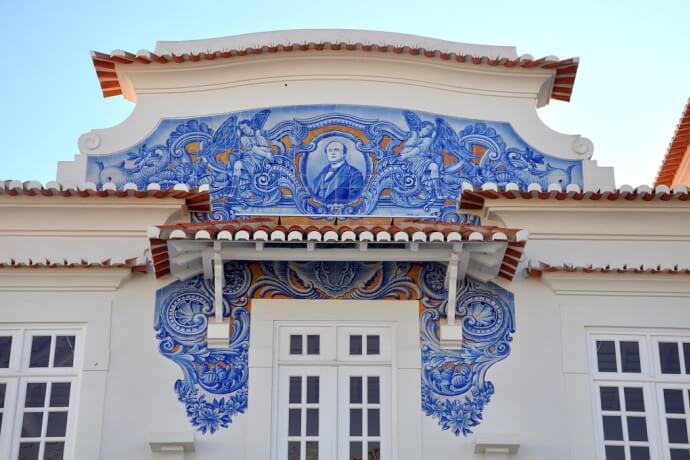
The antique train station of Aveiro is a stunning example of early 20th-century architecture and it features some notable decorative elements. Its interior is adorned with azulejo panels, covering large sections of the station's walls, creating a beautiful and visually striking ambiance.
These panels often depict scenes from the region's history, culture and landscapes and the artistic representations include local landmarks, traditional fishing boats (“moliceiros”), salt pans and other symbols of Aveiro's identity. In addition, some azulejo panels also feature stunning intricate floral and geometric patterns, showcasing tile artists’ skilled craftsmanship and versatility.
The combination of the antique architecture and the tilework decorations in the Aveiro train station provides you with a completely unique and immersive experience, reflecting the wealthy Portuguese cultural legacy.
São Bento train station
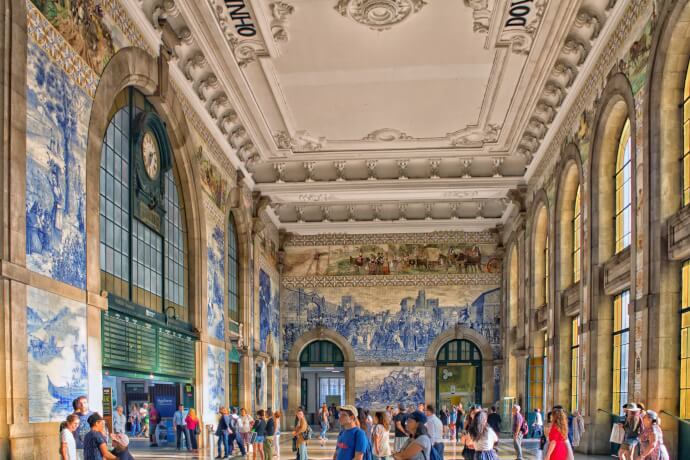
The São Bento Train Station in Porto is renowned for its stunning azulejo panels, making it one of the most beautiful train stations in the world. It is located in the city centre and is a popular tourist attraction due to its architectural beauty and historical significance.
Its main highlight in the interior is the extensive display of azulejo panels covering the walls of the main hall. These traditional blue and white ceramic tiles feature intricate and captivating designs, depicting various historical scenes that include significant moments from Portugal's history, local traditions and rural landscapes. These panels serve as a visual narrative, telling stories from Porto and the surrounding region. The azulejo artwork at São Bento Station showcases exceptional craftsmanship of local tile artists and its level of detail and artistry is truly impressive, capturing the essence of Portuguese culture and heritage.
The Estação de São Bento is more than a functional transportation hub, it is a living art gallery, where you can immerse yourself in the cultural heritage of Portugal through the mesmerizing display of azulejo artwork.
Igreja de São Roque
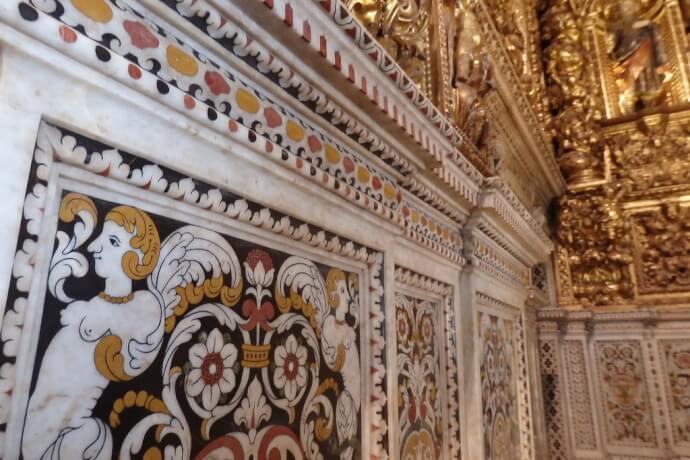
Igreja de São Roque, also known as the Church of Saint Roch, is a Jesuit church located in Lisbon and it is considered one of the most important churches in the city, known for its exquisite interior, which includes a remarkable collection of azulejos. The azulejo panels here showcase a mix of Baroque and Rococo styles, reflecting the prevailing artistic trends during the period of their creation.
The Chapel of St. John the Baptist, inside the church, is worth your attention as well, as it features an impressive display of azulejos. The entire interior of this chapel is covered with beautiful blue and white tiles that depict scenes from the life of St. John the Baptist. The detailed and intricate tilework adds a unique artistic touch and complements the religious significance.
Other parts of the church also feature azulejo decorations, such as the altars and side chapels. These tile embellishments add to the overall beauty and historical value of the church.
Palácio Nacional da Pena

The Palácio Nacional Da Pena (Pena National Palace of Sintra), is a historic and magnificent palace, as well as a UNESCO World Heritage Site. Known for its unique blend of architectural styles, it features stunning inner decorations, including the use of azulejos. The interior of the palace features a remarkable collection of diverse but equally impressive azulejo panels, boasting intricate designs and motifs that adorn several of its rooms and halls.
One of the most famous rooms in the Pena Palace is the Hall of Coats of Arms (Sala dos Brasões). This grand room is entirely covered with azulejos and is known for its impressive display of 72 coats of arms representing the Portuguese noble families. A must-visit! The Magpie Room (Sala das Pegas) is named after the magpies depicted in the azulejo panels and they portray the playful birds in a variety of scenes. The Swan Room (Sala dos Cisnes) is another area worth admiring, with its peaceful tiles depicting swans swimming gracefully in a serene pond. The kitchen area of the palace is also decorated with azulejos, showcasing various kitchen utensils and culinary motifs.
The intricate an elaborate tilework of the Pena Palace adds to its overall charm and beauty, providing a glimpse into Portugal's artistic legacy and its influence on the nation's cultural identity.
Bom Jesus do Monte
Bom Jesus do Monte is a popular pilgrimage site located near the city of Braga, in the north of Portugal, known for its impressive Baroque stairway that leads up to the Bom Jesus Sanctuary.
One of the unique features of the stairway is precisely the use of decorative tiles, depicting religious and historical scenes, so as you ascend the elaborate staircase, you will be treated to a visual feast of religious and historical scenes portrayed on the azulejos, each tile telling a story from the region's rich cultural heritage.
The intricate artistry and vibrant colours of these tiles add a sense of wonder and spirituality to the pilgrimage experience. As travelers reach the top of the hill, they are rewarded with breathtaking panoramic views of the city below, a perfect culmination of the journey through the mesmerizing world of azulejos in Bom Jesus do Monte.
Bring a piece of this unique craftsmanship with you
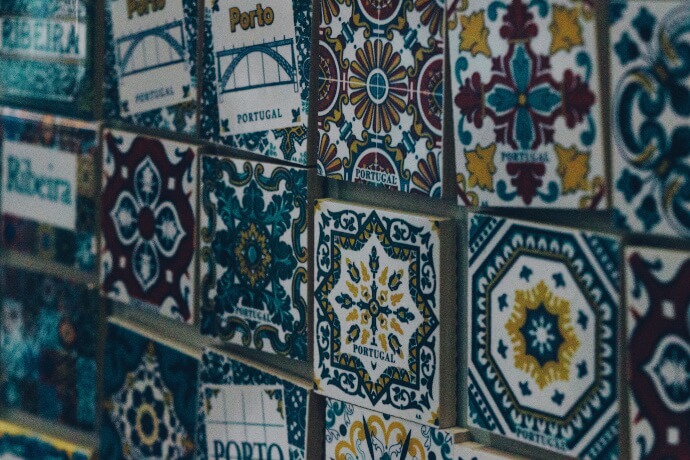
After admiring such artistic and unique pieces of azulejo, we know you will want to bring a piece of this traditional ceramic craft home with you. Therefore, we gathered some of the best places where you can buy souvenirs and take a piece of Portugal wherever you go.
Fábrica de Sant'Anna
Immerse yourself in the captivating world of Portuguese craftsmanship at Fábrica Sant'Anna in Lisbon. This renowned ceramics’ factory has been preserving the age-old art of azulejos, traditional handmade and hand-painted tiles, for generations.
As you witness skilled artisans at work, you will gain a deeper appreciation for their dedication to preserving this centuries-old craft. Fábrica Sant'Anna is not just a showroom, but an experience that brings the vast cultural heritage of Portugal to life, allowing you to connect with the country's artistic roots and indulge in its timeless beauty.
Cortiço e Netos
This family-owned pottery workshop, with its roots dating back to the 19th century, offers a glimpse into the country's rich artistic traditions. Wander through their cosy showroom on a quaint cobbled street in Lisbon and be captivated by the exquisite handcrafted tiles and pottery on display. Each piece tells a story, reflecting the skilled craftsmanship and passion that has been passed down through generations.
Prometeu Artesanato
Discover the essence of Porto's vibrant artisan scene at Prometeu Artesanato. Stepping into this delightful shop is like embarking on a journey through Portuguese craftsmanship.
The shelves are adorned with an enchanting array of handcrafted treasures, from intricately painted azulejos to beautifully carved wooden pieces. Each creation tells a story, reflecting the passion and dedication of local artisans.




